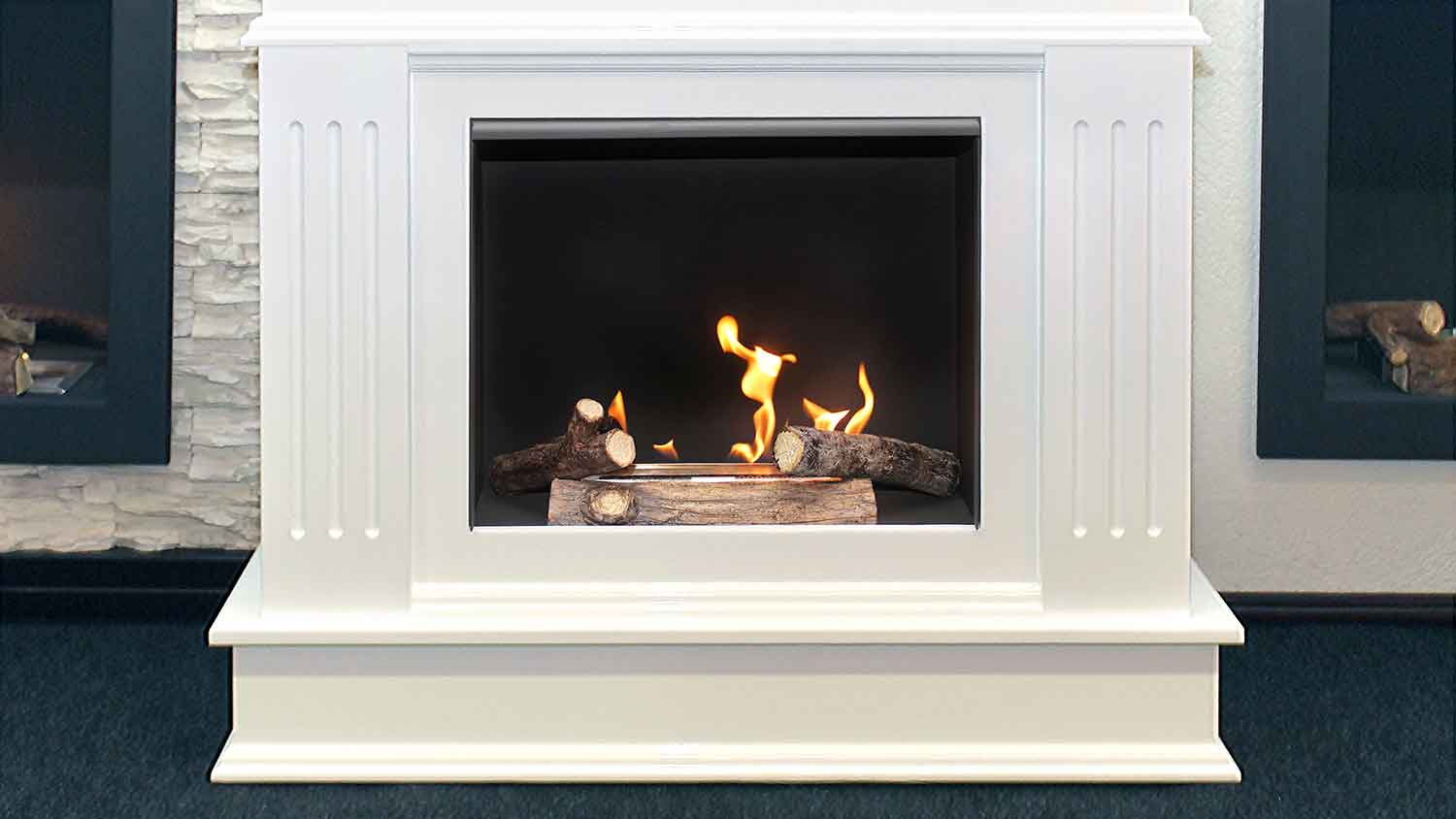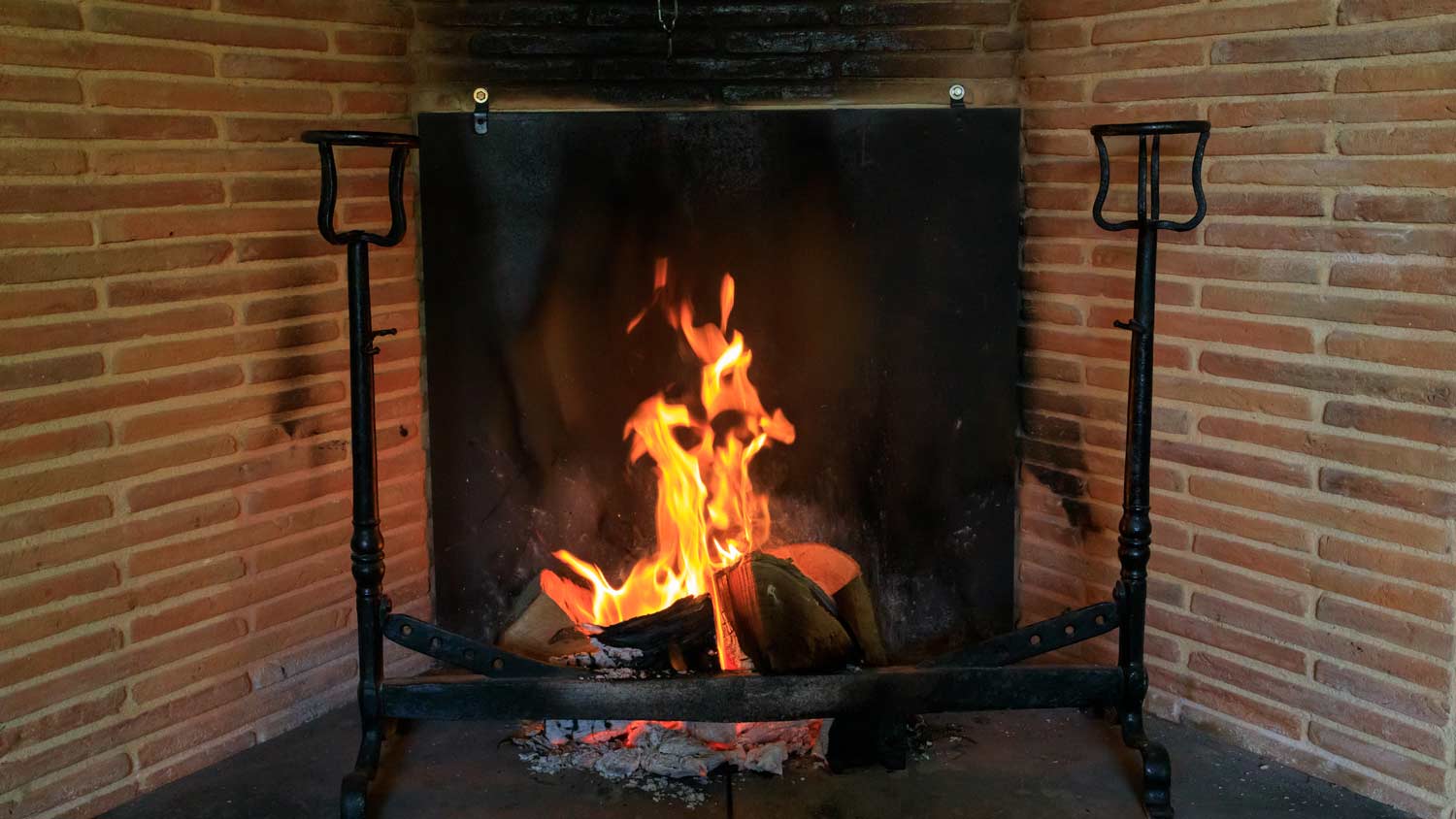Can You Use Ventless Gas Logs in a Vented Fireplace?
You should always opt for vented gas logs over ventless gas logs in a vented fireplace


Ventless gas logs should work in a vented fireplace since the vent would release the gas produced by these types of logs...right? Not necessarily. In fact, using ventless gas logs can actually pose an increased risk of carbon monoxide exposure when used in a vented fireplace.
As the air turns cold and the first leaf falls, your craving to snuggle up by a cozy fireplace ignites. If you have a gas fireplace, then you know that ventless gas logs offer an affordable way to fill your home with warmth. Unfortunately, these logs emit small amounts of carbon monoxide and require specific monitors and regulators to ensure the air your family breathes is safe. Nothing ruins a cozy night in like gas fumes.
Read on to learn about ventless gas logs, how they work, and whether they’re an appropriate choice for your vented fireplace.
How Vented Gas Logs Work
Vented gas logs connect to a gas line throughout your home. When you “light” the firewood, you’re actually lighting the gas that the logs produce. The heat, gas, and possible smoke are then funneled out of the home through a chimney and flue.
To help fuel the fire and keep air moving, vented fireplaces have both an intake and outtake vent. The intake keeps fresh air moving into the fireplace and then pushes the fumigated and combusted air out through the outtake vent.
If the “firewood” connected to the gas lines ever catches fire, it’s fine, as there’s a clear path for the fire to escape from. Though you should still put out the fire if this happens.
How Ventless Gas Logs Work
Ventless gas logs also burn gas to create a flame, except there is no chimney and flue to allow the carbon monoxide to escape. Instead, ventless gas logs use a regulator that also pumps air into the gas to burn, creating a cleaner burn.
While ventless gas logs produce less toxic gas than vented gas logs, they still create byproducts that you don’t necessarily want to inhale in large quantities (think: carbon dioxide, carbon monoxide, sulfur dioxide, etc.). This is why ventless fireplaces have carbon dioxide monitoring and even low oxygen monitoring. In the event that too much carbon dioxide or too little oxygen is detected, it automatically shuts off the fireplace.
Warning: Ventless gas logs require a specific arrangement to burn safely. The manufacturer will have set up instructions for how to place the logs so that they cannot catch fire. If they ignite, the smoke has no place to flow except into your home.
Can Ventless Gas Logs Be Used in a Vented Fireplace?
If vented fireplaces offer increased ventilation, then ventless gas logs must be safe for use, correct? Not at all. The carbon monitoring and the other safety precautions found in ventless fireplaces are built into the surrounding system, not the logs themselves. If you put ventless logs in a vented fireplace, the fire could still burn too much gas and cause excess toxic fumes without activating the warning detectors.
Vent-free gas logs typically only test with the impression that they’re going to be in a ventless fireplace, so they’re likely not to fit the safety standards of the vented option.
Ventless Fireplaces Are Banned in Some States
In some cases, you may not be able to choose between vented or ventless gas logs and fireplaces. Some states—such as California, Massachusetts, and even some parts of Texas—have banned the use of the system due to the safety concerns of ventless fireplaces. You should check your local ordinances before you follow through with the purchase.
What Kind of Logs Should You Use in a Vented Fireplace?

Ideally, you’ll only want to burn vented gas logs in a vented fireplace. Even using real firewood poses a risk, as the fire from real wood is unpredictable and could cause the gas to ignite. The manufacturer of the fireplace should list a set of brands and types of logs that are suitable for your exact setup.
You could also consider converting your gas fireplace to a wood-burning fireplace if you want to avoid gas altogether. Most gas fireplaces already have a ventilation system in place to support wood-burning conversions. The vital part of a gas to wood-burning fireplace conversion is ensuring there’s no longer any gas near the flames.





- Pros and Cons of Ventless Gas Fireplaces in the Home
- Does a Gas Fireplace Need a Chimney?
- Who Installs Gas Fireplaces? Here’s Everything You Need to Know
- How to Light a Gas Fireplace No Matter the Remote or Switch Type
- Can You Install a Fireplace Without a Chimney?
- Vented vs. Ventless Dryers: Pros, Cons, and Costs
- How to Build a Fireplace to Boost Your Home’s Coziness Factor
- Signs of a Gas Leak: Everything You Need to Know
- What to Do if Your Gas Stove Was Left on Without a Flame
- Who Fixes Gas Stoves?










